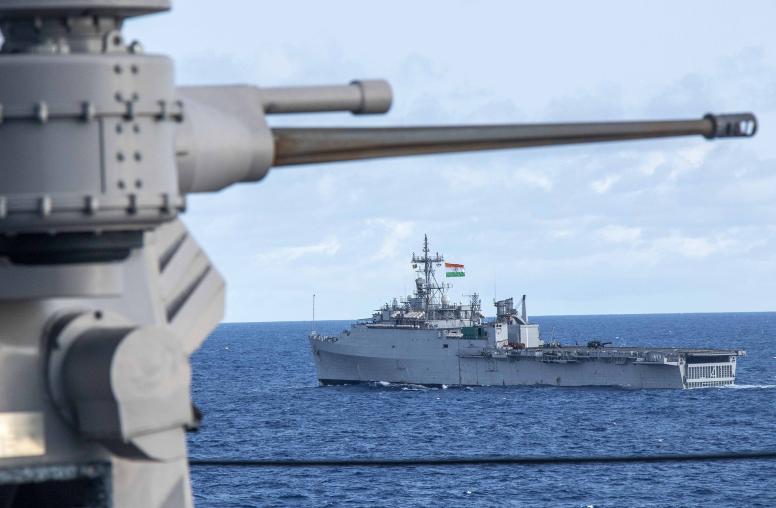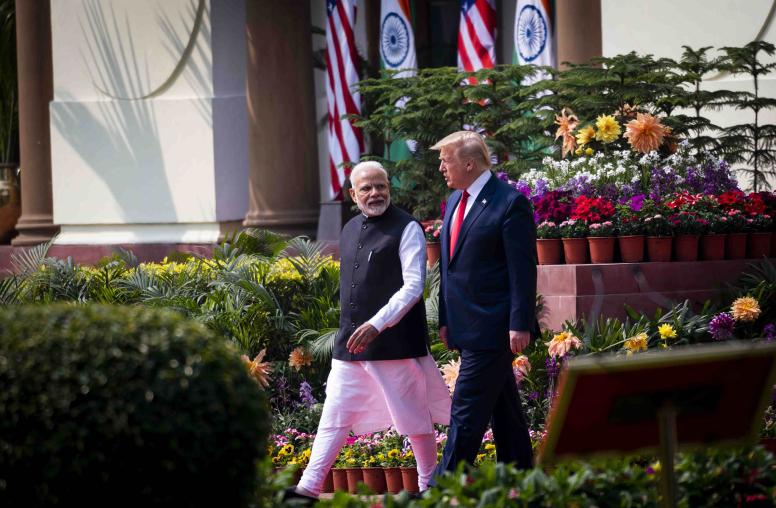Have Nuclear Weapons Prevented an All-out War in South Asia?
Twenty years after India and Pakistan’s nuclearization, major war has been avoided, but conflict persists.
In Washington, discussion of the threat of nuclear proliferation mostly focuses on Iran and North Korea. Yet in South Asia, a nuclear stalemate between India and Pakistan persists, with decades of tension that regularly threaten to escalate at a moment’s notice. This has been the state of play since 1998—it was 20 years ago this May that both countries first tested nuclear weapons. At the Line of Control—the military line that separates Indian and Pakistani controlled parts of Kashmir—levels of violence are higher than at any point in the last 15 years. USIP’s Moeed Yusuf, author of the recent book Brokering Peace in Nuclear Environments: U.S. Crisis Management in South Asia, reviews the evolution of Indo-Pakistani relations since 1998, the impact of nuclearization on other conflicts between the two South Asian Powers, and what, if any, role the U.S can play in facilitating a peace process.

Twenty years after India and Pakistan’s first nuclear tests, how has the relationship between the two countries evolved? Where does the threat of nuclear hostiles stand today compared to 1998?
When the two sides tested nuclear weapons in 1998, many who supported the move justified it by arguing that nuclear weapons would eliminate war and stabilize the relationship. Major war has been eliminated. But low-level conflict, crises, and sub-conventional actions like terrorism and constant violence on the Line of Control surely have not.
The India-Pakistan rivalry is one of the most crisis prone in the world. Since 1998, they have fought one limited war and experienced at least two major and several minor bouts of tension. None of them have escalated and none threatened nuclear hostilities, but they were stark reminders of the unfinished business of conflict resolution in South Asia.
The two sides did try deeper dispute resolution through an intense peace process between 2003-2007. Progress was made—but not enough. Sadly, that moment has long passed. As we speak, the Line of Control is experiencing the highest levels of violence in over 15 years. A low-level military exchange has continued uninterrupted for the past year. Civilians have also been killed at an unprecedented rate. While India and Pakistan have a long history of managing these low-end conflagrations, the atmosphere is extremely tense. Another major spark and we might find ourselves amid yet another crisis.
President Bill Clinton called the disputed territory of Kashmir the “most dangerous place in the world” at the turn of the century. How has India and Pakistan’s nuclearization altered their dispute over Kashmir?
It hasn’t—at least not for the better.
Nuclear weapons are supposed to take military conflict as a means of altering territorial status quos out of the equation. In that sense, South Asia’s nuclearization has frozen Kashmir’s status as a divided but still-disputed territory. But this frozen territorial distribution has not eliminated violence from Kashmir. In fact, India argues that Pakistan has used anti-India militants as proxies with greater impunity after nuclearization, recognizing that the Indian option for a conventional military response is heavily circumscribed in a nuclear environment. For its part, the Indian state’s response to dissent inside Indian Kashmir seems unaffected by nuclearization. It has changed little in its modus operandi—heavy handed as it is—since the 1990s when Kashmir experienced a full-blown insurgency.
To be sure, Kashmir remains the single most likely reason for any future India-Pakistan war.
What role can the U.S. play in mitigating the risks of crises in South Asia and in facilitating a peace process between the two sides?
I have spent the past five years or so researching this question, only to conclude that the U.S. and other third-party states have had an abnormally exaggerated role in crisis management in South Asia. Abnormal because all nuclear deterrence literature would tell you that when you have two nuclear powers in a crisis, third-party influence is muted. Nuclear weapons and strategic independence go hand-in-hand.
I discovered that while this conventional wisdom fit the Cold War superpowers well, it isn’t so for middle-tier countries. Regional nuclear powers are always going to have stronger third-party states eager to influence them to de-escalate crises. India and Pakistan have been especially susceptible to this pressure as they have failed to agree on robust bilateral escalation control and crisis management regimes. The incentive to transfer the burden of crisis management to a third party is therefore high.
Of course, I’d add that the positive U.S. role in the past occurred at a specific point in time when U.S. supremacy was rather unchallenged and great power competition had not resurged the way it has in the past year or two. To date, other third-party states with influence in South Asia have not tried to outcompete the U.S. or use India and Pakistan as regional proxies to undercut U.S. influence. Whether this will hold now given the intensifying tensions between great powers is, at best, an open question. If it doesn’t, the third parties may well move from being agents of de-escalation to drivers of escalation in South Asia—as they jockey to use crises as opportunities to advance their global competition rather than focusing on de-escalating the crisis.
The U.S. role in a peace process is a whole other matter. The general view in Washington is that we have been there, done that and it doesn’t work. India does not welcome any outside role to go beyond crisis management and the U.S. is unlikely to test India on that. The deteriorating U.S.-Pakistan relationship also implies reduced appetite in Islamabad to demand such a role from the U.S. as Pakistan traditionally has.
I think the future will resemble the recent past in this respect: U.S. availability for crisis management: yes; for dispute resolution: no.
What chances are there for denuclearization in South Asia?
None. This question is long settled. India and Pakistan jealously guard their nuclear status and will not entertain any such thought. The real challenge for the world is how to mainstream them into the nuclear club, which will formally force them within the legal bounds of global non-proliferation regime. This will have to happen sooner or later.



